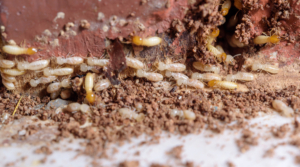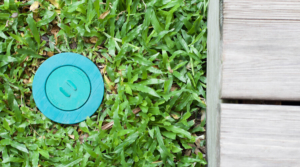10 Reasons to Invest in a Termite Barrier
Embrace Termite Barriers for a Lasting Protection
Termites can secretly cause water damage and costly destruction to your home’s structural integrity.
Left untreated, entire wood frames become critically weakened over time from termite jaws steadily gnawing through.
Prevent this major damage from happening by installing barriers and scheduling annual inspections to catch any signs early on.
Defend your home against expensive termite repairs and protect its structure from compromise.
1. Termites Are A Common And Destructive Pest
Termites are present in 49 of the 50 US states. An estimated 600,000 homes suffer from active termite infestations every year. They feast on cellulose material like the wood in your home’s structure. This leads to severe and costly property damage.
A termite colony can invade unseen for years before any warning signs emerge. Don’t become their next meal ticket. Installing a protective barrier early on is your best line of defense.
2. Barriers Stop Termite Entry Points Around Your Foundation
Subterranean termites tunnel underground to access their food sources. They’ll enter your home through tiny cracks in the foundation and build mud tubes to reach wood sources.
An effective termite barrier uses non-toxic materials to block these tunnel routes. Barriers are installed underground around all exterior foundation walls and entry points. This creates an impenetrable fortress to keep termite intruders out for good.
3. Earlier Treatment Means Less Damage
Catching a termite infestation early makes a huge difference in the resulting property damages. The longer they have unlimited buffet access to your home’s wood structures, the more destruction they can cause before detection.
4. Look For These Warning Signs Of Termites
- Mud tubes along exterior walls or foundation
- Hollow sounding wood
- Peeling wood or paint
- Sagging doors or floors
If you spot these red flags, it likely means termites have already infiltrated your home. Get a professional termite inspection right away. The earlier treatment begins, the better your chances of minimising major structural damage.
5. Why Spot Treatments Aren’t Enough
When termites are detected inside your home, many companies recommend minor spot treatments only. But this is like putting a bandaid on a gaping wound.
For full protection, the contaminated wood must be removed and replaced. Then barrier treatments installed around the entire foundation perimeter to keep them from returning. Don’t settle for anything less when it comes to adequate termite control.
6. Only Specific Materials Can Effectively Block Termites
Termite barrier products must meet strict standards to qualify as effective prevention solutions:
- Stainless Steel Mesh: A mesh sheet metal that disrupts electromagnetic signals termites use to navigate toward food sources
- Basaltic Rock: A natural volcanic rock containing high levels of silica that destroys termites upon contact
- Sand Particles: Tiny sharp sand bits fill tunnels and prohibit termite passage.
7. Why DIY Termite Prevention Is A Bad Idea
When it comes to keeping your home safe from termite destruction, it pays to call in the big guns. Here’s why DIY termite treatments tend to fail:
- Improper application around the entire foundation
- Not inserted into soil deep enough to block tunnels
- Gaps left vulnerable to termite entry
- Lacking adequate layers of protection
Incorrect barrier installation leaves open access for termites to sneak through untouched. Property damage costs shoot back up without full fortification. Protect your investment with guaranteed professional installation.
8. Woods Most Vulnerable To Termites
All woods contain cellulose – termites’ primary food source. But some classic building materials used in home construction attract them more than others.
Check any exterior wood structures touching soil for early activity signs. Trellises, posts, decks and wood piles provide easy uncovered access.
9. Get An Annual Termite Inspection
Even with barrier protections installed, regular inspections help catch early warning signs. A trained professional knows all sneaky termite hiding spots and damage indicators.
Annual inspections should scan both interior and exterior, including:
- Attics
- Basements
- Crawl spaces
- Mud tubes on walls
- Hollow wood sounding
Don’t let years go by before checking for new activity. Scheduling annual inspections ensures any termite breakthroughs are caught right away before major destruction.
10. Average Cost To Treat Termites
If termites infiltrate before barriers are set up, here are average treatment costs:
- Spot treatment only: $500
- Full home fumigation: $2,000
- Tenting and treatment: $3,000+
- Damage repairs: $10,000+
Preventative termite barriers run just $1,500-$2,000 on average. That one-time fee saves tens of thousands over reactive treatments and repairs. Act now before termites chomp through your home equity.
FAQs
What is the difference between a chemical barrier and a physical barrier for termite protection?
Chemical barriers use insecticidal liquids or foams to poison termites. Physical barriers like stainless steel mesh or sand particles create a protective wall that physically blocks termite entry and tunneling without using chemicals. Both can provide good protection against termite attack if installed correctly around the home’s foundation.
Will my insurance company cover termite damage costs?
Unfortunately, most insurance policies do not cover damage caused by these pesky insects. That’s why getting preventative barriers installed by a professional service is so important. It can save you from paying thousands out of pocket for major damage down the road.
What options do I have for termite bait systems?
Termite bait stations use slow-acting toxic baits to lure colonies in and eliminate them.
Two types of bait stations are available:
- Above-ground bait stations are visible boxes installed around the exterior.
- In-ground bait stations are inserted into the soil with only a small lid visibly above ground.
What are the signs I should look out for to detect early termite damage?
Warning signs to look for include mud tubes along the foundation, hollow-sounding wood, sagging doors or floors, peeling paint or wood damage. If you spot any of these signs, call a pest control professional immediately for an inspection and start the treatment process.
Conclusion
Termites pose a real threat to the safety and integrity of your house.
By seeking out moisture and wood cellulose, they can cause escalating termite activity and structural damage if left unchecked.
Don’t wait until you have costly destruction and major repairs on your hands.
Schedule regular inspections to catch any warning signs early before extensive damage develops.
Protect your home and your wallet by keeping vigilant against termite intrusions.



